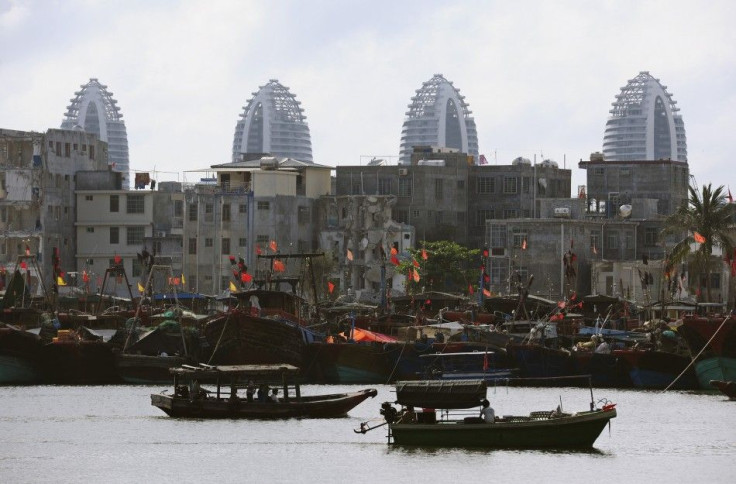North Korea 'Piracy' Targets China Fishing Vessels, As Chinese Fishermen Draw Controversy Across Asia-Pacific

These are turning out to be difficult times for Chinese fishermen. Even North Korea, which relies on China for large quantities of economic assistance, is picking on its far bigger neighbor's sailors.
On Wednesday, state media reported that the Chinese Foreign Ministry confirmed that 29 Chinese fishermen and 3 fishing boats had been taken captive by as yet unidentified persons from North Korea. Whether those entities were criminals acting independently, or ultimately personnel with links to government authorities, remains unclear.
However, the case has many of the hallmarks of the maritime hijackings and piracy that are more common in South East Asia or the Gulf of Aden. Xinhua says that the three ships and its crew were variously captured between the early morning and afternoon of May 8, within Chinese waters.
The following morning, hostages used a satellite telephone provided by the North Korean captors to confirm to Chinese negotiators that a ransom of 1.2 million yuan or about $190,000 was being asked for the return of both the sailors and ships.
There's been little indication so far that the incident has caused any larger upset between the two countries.
Over the past month, Chinese fishermen have found themselves a central element in foreign policy disputes between China and other Western Pacific nations.
On April 30, South Korean authorities reported that arrests of 9 Chinese fishermen poaching in Korean waters led to a scuffle that resulted in 4 Korean coast guard officers being hurt by knife wounds. Earlier, on April 19, South Korean news agencies reported that Chinese fisherman Cheng Dawei, who had stabbed and killed a Korean coast guard service member in December 2011, had been sentenced to 30 years in a Korean prison. South Korea has seized 475 Chinese fishing vessels over the last year in the Yellow Sea for illegal entry and fishing in their waters.
The incidents between South Korea and China have incensed nationalistic communities in both countries.
On April 8, the Philippine coast guard discovered 8 Chinese fishing vessels operating at Scarborough Shoal. Two days later, the largest vessel in the Philippine fleet arrived and sent armed marines to board the Chinese boats, claiming the fishermen were poaching sharks and coral in Filipino waters.
Chinese maritime surveillance ships (the equivalent of the coast guard) soon arrived to face off with the Filipino ship. The confrontation, still ongoing, has led to wider trade disruptions and fears of armed conflict between the two nations; open conflict between China and the Philippines, a U.S. ally, would likely result in U.S. involvement. Scarborough Shoal is claimed by both China and the Philippines as sovereign territory - the former calls it Huangyan Island while the later refers to it as Panatag Shoal.
The Sino-Filipino incident is only part of a series of confrontations in recent years between China and South China Sea neighbors, which claim overlapping zones of maritime territory over an area critical to regional fisheries and local economies.
But even in places as far away as Palau, more than 2,900 kilometers (1,800 miles) from China's southern Hainan Island, Chinese fishermen are getting into confrontations with local authorities. Palau, an island nation in the Pacific, is located between Papua New Guinea and the Philippines. On April 2, Palau police shot and killed a Chinese fishermen and arrested 25 others originally from Hainan during a chase with what Palau says were illegal poachers.
Palau authorities also claim the Chinese vessel attempted to ram its coast guard ship. The fishermen were later released and flown home to China more than two weeks later. Palau does not have diplomatic relations with the People's Republic of China on the mainland and instead recognizes the Republic of China government on Taiwan.
Beijing may be upset and embarrassed with the friction caused by its own fishermen and has enforced a temporary fishing suspension in the South China Sea. The seasonal fishing moratorium, which goes into effect on Wednesday, will last until August. It will mostly affect fishermen in China's southern provinces, particularly on Hainan, and may serve to alleviate present tensions in the South China Sea.
Although Hainan has become home to a booming tourist industry in recent years, fishing remains an important part of regional livelihoods, especially for smaller communities and lower-income families. New skyscrapers dot the landscape at Hainan's tourism resort of Sanya, China's southernmost city, and yearly conferences at Bo'ao draw business moguls and leading poltiicans from across the world, but the province still has one of the lowest GDPs per capita in all of China. Government figures show that economic growth rates there were the fastest of any province in 2011, at 25 percent, but it is unknown how effectively government investment will be able to trickle into fishing communities outside major tourist destinations.
Consequently, even when the recent ban is lifted, Hainan fishermen may have no choice but to head into controversial waters again, likely stirring tempers abroad. As for Beijing enforcing stricter regulations on its own fishing communities, the task won't be easy. After all, people in China understand the old adage that heaven is high and the emperor is far away - in this case, even more so when you're off on the high seas.
© Copyright IBTimes 2024. All rights reserved.




















